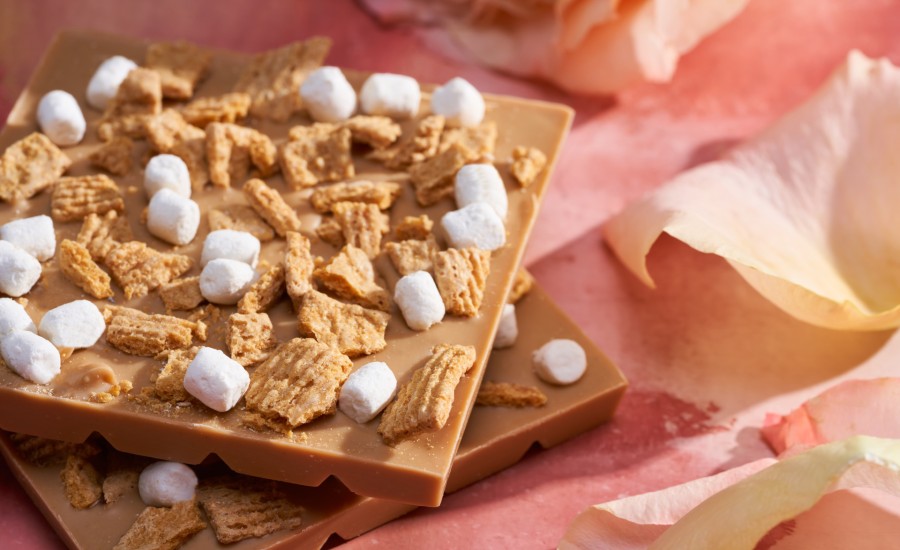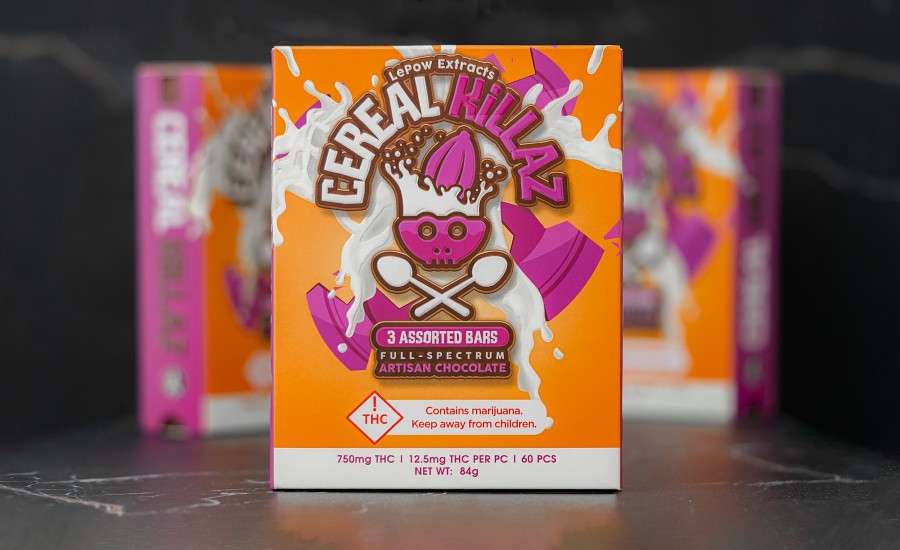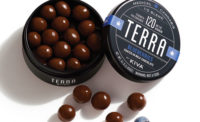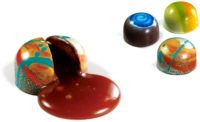Cannabis-infused chocolate provides functional indulgence
Manufacturers offer nostalgic products with a variety of dosage options.

Photos courtesy of Coda Signature, Cresco Labs, Insa, Verano, LePow Extracts
Chocolate pairs well with many ingredients—peanut butter, caramel, and even mint—but if you ask product development professionals in the edibles space, they’ll say chocolate and cannabis are the supreme combination.
In addition to their complementary fatty bases, cannabis and chocolate contain anandamide, an endocannabinoid known as the “bliss molecule” for activating feelings of joy and happiness.
Add in its ability to carry a variety of flavor profiles and you’ve got a match made in heaven, said Lauren Gockley, co-founder and vice president of Coda Signature.
“When you put the two together, they really just amplify each other in such a synergistic way,” she said. “I couldn’t write that kind of coincidence in any fairy tale.”
Cannabis-infused chocolate makers are building on the familiarity and function of the format to deliver nostalgic and indulgent flavor experiences alongside a variety of dosage options.

 Photos courtesy of Coda Signature, Cresco Labs, Insa, Verano, LePow Extracts
Photos courtesy of Coda Signature, Cresco Labs, Insa, Verano, LePow Extracts
Manufacturing considerations
Chocolate, which contains cocoa butter, and cannabis oil have complementary fat contents, making combining them a “simple and exact process,” said Kevin Moses, director of wholesale marketing, Verano.
“In the development of chocolate cannabis products, there is no water to account for, as opposed to other confections that require the water weight to be cooked down,” he said. “The exact weight of chocolate you melt down is the exact weight you will dose, temper and deposit. This allows for dosing chocolate to be very accurate when using cannabis distillate.”
When infusing cannabis oil into liquid chocolate, batches must be thoroughly mixed, noted Megan Coffey, R&D lab manager, Cresco Labs.

“A big piece is making sure you’re mixing it long enough so it has enough time to really melt out,” she said. “It’s important that the chocolate is in its melt phase—you don’t want it to be in its tempering phase or cooling down phase when you’re infusing.”
Coffey added Cresco Labs will pull samples from the top, middle, and bottom of the chocolate tank for high-performance liquid chromatography (HPLC) testing to ensure the batch is homogenous. She also cited the importance of controlling the production environment, including temperature and humidity.
But before manufacturers can reach the mixing and dosing stage, they must think carefully about the ingredients they’re using to craft their products. Gockley said Coda Signature is introducing a proprietary blend developed in collaboration with Republica de Cacao, an Ecuadorian sister company of premium chocolate brand Valrhona.
“(We’re) really wanting to tell not only the story of the chocolate, but the story of the farmers who make the product as incredible as it is,” she said.
Chocolate’s flavor notes are only part of the equation, however. Julian Rose, head chef and director of R&D for Insa, said it’s critical to understand cannabis oil flavor profiles, whether a manufacturer is using distillate or full-spectrum oil.
“Distillate has a mild flavor, while full-spectrum oil has a potent profile that pairs well with other strong flavors like mint,” he said.
Products on the market
Cresco Labs introduced its Mindy’s line—developed in collaboration with James Beard Award-winning chef Mindy Segal—in Illinois’ medical market in 2016. The company reformulated and relaunched the brand once the state’s adult use market opened in 2020.
While Coffey pointed to the potential for incorporating unique flavors into chocolate, she noted traditional, indulgent flavors continue to perform well in the market.
“You can infuse chocolate really nicely with teas, spices and fascinating ingredients that can taste delicious together,” she said. “There is a lot of opportunity for innovation, but I still see these iconic, classic flavors.”
Cresco Labs’ Mindy’s chocolate portfolio features three bars: Milk Chocolate Peanut Brittle with 100 mg THC, Dark Chocolate Almond Toffee with 100 mg THC, and Caramelized Chocolate Marshmallow Graham with 100 mg CBD and 100 mg THC—the brand’s top-selling chocolate offering.



Verano focused on chocolate’s inherent flavor characteristics in its Encore chocolate offerings, Moses noted. He said the company chose a dark chocolate that wouldn’t be overly bitter and a milk chocolate that offers a “robust and deep flavor profile.”
“Our Encore dark chocolate is made with 61% cacao, a nice middle ground for dark chocolate aficionados and those less familiar,” he said. “The milk chocolate product line is made of 40% cacao, providing milk chocolate lovers with the sweetness they’re seeking, while still challenging their palate with a full-bodied, creamy chocolate flavor profile.”
Verano’s core Encore chocolate products include:
- 1:1 Dark Chocolate with 10 mg CBD and 10 mg THC per piece
- 1:1 Milk Chocolate with 10 mg CBD and 10 mg THC per piece
- 1:1 Milk Chocolate with 10 mg CBN and 10 mg THC per piece
- Milk Chocolate Indica with 10 mg THC per piece
- Milk Chocolate Sativa with 10 mg THC per piece
Meanwhile, Insa has experimented with limited-time seasonal flavors, mirroring the traditional confectionery industry. The company offered the S’Mores Chocolate Bar last summer, following with the Peppermint Candy Cane Dark Chocolate Bar and the Gingerbread Milk Chocolate Bar for the holiday season.



For Valentine’s Day, Insa debuted Red Velvet Cake Truffles, which combined red velvet ganache in a shell of smooth milk chocolate. Each truffle and chocolate bar piece contains 5 mg THC.
“We began developing the seasonal chocolate bars as a way to work with flavors that are popular seasonally, such as pumpkin and the warm flavors of fall,” Rose said. “It’s fun getting to experiment with new, special flavor combinations and seeing how consumers react to these different offerings. We’ve had seasonal products like the Peppermint Candy Cane Dark Chocolate Bar that are so popular that we have considered adding them to our full-time menu.”
In October, LePow Extracts introduced in Colorado a line of miniature chocolate bars inspired by nostalgic breakfast cereals. Formulated with Rick Simpson oil and distillate, each adult-use bar contains 33.33 mg THC, divided into 1.6 mg squares. The line includes three flavors: Cinnamon Crazy, 63% bittersweet dark chocolate with cinnamon crunch cereal pieces; Cocoa Loco, milk chocolate topped with crispy cocoa cereal flakes; and Berry Insane, a pink-hued white chocolate sprinkled with fruity cereal flakes.

In terms of developing flavors, Gockley said she takes inspiration from specific ingredients and experiences. For example, Coda Signature’s Coffee & Doughnuts bar stemmed from childhood memories of getting coffee and doughnuts with her father.
“(I want) every flavor that I create to have a really specific intention and thoughtfulness because someone is choosing Coda to take a cannabis experience, which is a commitment,” she said. “I really want to make sure that from start to finish that person is having the most delicious, safe and memorable experience they possibly can.”
In 2016, Coda Signature introduced the Crescendo and Forte truffle collections with the goal of offering Colorado consumers an elevated cannabis experience. The company suspended production of the collections during the COVID-19 pandemic, but Coda Signature debuted the limited-edition Fourth Season collection at the end of 2022.
Each chocolate was handmade and hand-painted. Available in Banana Hazelnut, Raspberry Black Sesame, and Yuzu Crème Brûlée flavors, each piece featured 5 mg THC and 10 mg CBD.
Gockley said the Fourth Season collection offered her a chance to reintroduce a legacy product in a new and interesting way. The company has already made plans to launch another truffle collection for the 2023 holiday season.
“It was a really joyful product to be able to make over the holidays and a fun time to be able to do it with the team,” she said.
Looking for a reprint of this article?
From high-res PDFs to custom plaques, order your copy today!







